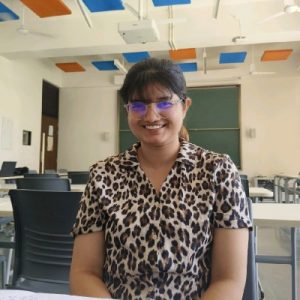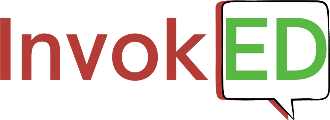Across India, there is a big, yet quiet, network of practitioners who have chosen a path not many dare to walk: to work with the public education system. They are people who partner with schools, district officers, government and communities to ensure that children receive enriching learning experiences, and are adequately prepared for the future of work and the planet. Their mission is inspiring – they are building the country as we all want it to be. But their daily work is rarely glamorous. Behind every intervention is an unseen layer of negotiations with umpteen number of stakeholders, predictable/ unpredictable delays, and hidden battles.
A group of practitioners came together to reflect on what it truly takes to work with the public education system and engaged in an honest reflection about their struggles, learnings, and motivation to persist. Through the exercise, four types of challenges experienced by the practitioners surfaced—programmatic, political, structural, and deeply personal. These layers shape not just their work, but for others engaged in the Indian public education system, every single day, often intersecting in complex ways. Read on:

1. Programmatic Challenges: Bridging Vision and Ground Realities
Delivering a well-designed education change programme is rarely as simple as following a checklist. The reality on the ground shifts daily, and so does the space to implement ideas. Schedules change overnight; local festivals, unexpected exams, or administrative reshuffles often mean that carefully planned activities get shortened, postponed, or cancelled altogether.
To quote a few examples – a team once designed an eight-hour career awareness workshop for Grade 10 students in a remote school — activities, discussions, and reflection time all built in. But when they arrived, the principal informed them: “Board exam preparation is urgent; finish in one hour if you must.” What was intended to be a space to spark student curiosity turned into a hurriedly delivered lecture.
Similarly, a youth-led speaking club was launched in a tribal pocket where students struggled to speak up. Volunteers spent weeks travelling back and forth to build trust. But when school timings changed due to a local festival, attendance dropped sharply. Restarting from scratch led to duplication of weeks’ worth of efforts.
This is the essence of the programmatic challenge: good design alone is never enough when everyday realities are unpredictable. Practitioners must adapt constantly, balancing fidelity to the programme’s purpose with the flexibility to respond to ground conditions. Too rigid, and nothing works; too loose, and the essence is lost. Navigating this tension, often with limited resources and tight timelines, is a daily test of creativity and patience.
2. Political Challenges: Building Trust and Courage in the system
For practitioners working closely with the system, the biggest political barrier is not just low priority — it is the silence and fear embedded at every level. Many local education officers hesitate to make decisions independently.
One practitioner shared, “The district officer won’t sign off on a simple approval without asking ten people above her. She’s afraid — if something goes wrong, who will take the blame?”
This culture of caution slows good ideas to a crawl. Even when a programme has official permission, a single hesitant officer or a cautious principal can quietly stall it. Practitioners spend days influencing one stakeholder after another, only to see their effort undone by one change of seat.
Another layer is the political filter on what is allowed to be addressed. Sensitive topics — such as caste bias in classrooms, or encouraging girls’ mobility and career choices — are sometimes brushed aside for being too “controversial” in conservative communities. Practitioners must find ways to work on such issues without triggering local resistance or political pushback.
There is also the constant puzzle of whether the “needs” handed down to NGOs reflect real community voices or shifting political calculations. “Are we responding to what parents and students want — or just doing what this government wants us to show on paper?” This question haunts many teams working inside the system.
Political will sometimes then tend to come across only as big policy statements — instead of individuals at every rung feeling safe, trusted, and authorised to act in children’s best interests without fear.
3. Structural Challenges: Aligning the system for real impact
Even when there is good intent and strong political will, the way the education system is designed often gets in the way of its own success. Policies are made with big goals, but they fail to work well on the ground, held back by a lack of coordination, scattered efforts, and a focus on following rules instead of offering real support.
Coordination isn’t just a nice-to-have in education systems — it’s the glue that holds everything together. When departments like SCERT, SIEMAT, and Samagra Shiksha work in sync, efforts become aligned, schools receive clear and consistent support, and teachers can focus on what matters most: student learning.
But when they operate in silos, even the best ideas fall through the cracks. Workshops overlap, messages get mixed, and schools are left overwhelmed and confused. Real impact happens only when departments talk to each other, plan together, and move as one system.
Sometimes, using technology in schools creates more problems than it solves. For instance, what is meant to be supportive supervision—where school leaders guide and help teachers improve—can end up becoming a system of surveillance. Instead of feeling supported, teachers start to feel watched and judged. This shifts the focus from meaningful growth to simply following rules out of fear of being marked “non-compliant.”
Coupled with an outdated syllabus and rigid classroom culture continue to produce students who are able to pass exams but struggle with the communication and problem-solving skills that today’s world demands.
4. Personal Challenges: Holding the work and being held by it
For many practitioners embedded within the education system, the work is not only professional — it is deeply personal.
“Because I’m young and a woman,” one practitioner explained, “there’s an assumption that I don’t know enough. People ask when I started, not what I bring [to the table].” These assumptions are not always loud, but they shape who gets listened to and who gets dismissed.
The act of reaching schools itself demands endurance. Many practitioners — especially women — travel hours to reach remote locations for a two-hour training. They return late in the evening, often without access to safe transport, toilets, or reliable electricity.
And once they arrive, the system doesn’t always welcome them with open arms. Teachers may not align with the principal. Some schools resist interventions based on who the facilitator is — gender, caste, religion, or background influences the execution. Discriminatory ideologies also show up in classrooms. In one instance, tribal students were dismissed as “not capable of learning,” not by the system, but by teachers from neighbouring communities.
Amid all this, a quiet question lingers: Are we even making a difference? As one practitioner put it, “I still don’t know what actually works. We’ve seen the data — it’s gone down in ten years. And still, we try.”
Why They Stay
Those working within the system understand that change is often slow, difficult, and uncertain. But they also know this: improving education isn’t about implementing a one-time solution. It’s about rebuilding trust between schools and families, teachers and communities, institutions and individuals.
Despite the fatigue, the friction, and the doubt, many practitioners continue to engage. Because sometimes, a student begins to see new possibilities after an exposure visit to college. A principal pauses to listen. A teacher reflects on a different perspective.
These are small shifts, but in a system as complex as ours, they hold quiet significance.
This reflection is drawn from a conversation among education practitioners who came together under the Telangana Education Leadership Collective (TELC) — a platform for organisations working closely with the public education system in the state of Telangana. The meeting, held in Hyderabad in June 2025, created space for honest dialogue on what it means to work within the system as a collective.
Participants:
- Abhijit Biswas – Bharat Dekho
- Fathima Sali – ShikshaLokam
- Nikshith Gangadevi – Shikshagraha
- Omkarnath Mummadisetty – Digital Equity
- Pavan Kumar Kolli – Future Dots
- Ravali Pidaparthi – Esther
- Saipramod Bathena – Alokit
- Syed Ziaur Rahim – InquiLab
- Vinay R Sanjivi – ShikshaLokam
- Yogitha Pelluri – ShikshaLokam






